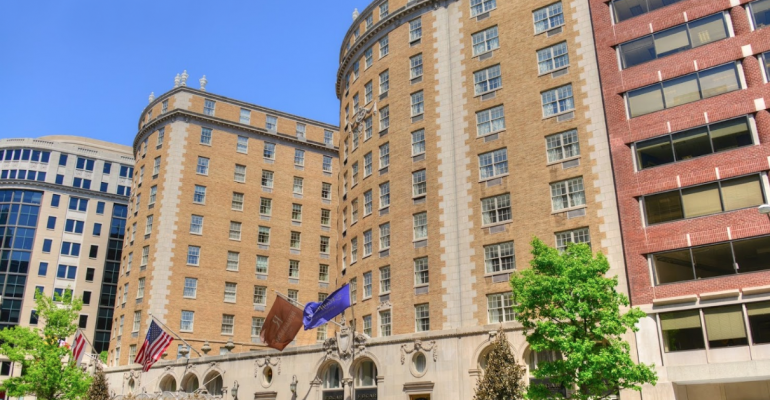Thus far, 2016 has not been a great year for revenue per room (RevPAR) growth in the hotel industry, but one of spotty performance, with supply concerns weighing on the industry. How are hotel owners and investors maximizing their returns at this point in the cycle? According to speakers at New York University’s International Hospitality Industry Investment Conference taking place this week in New York City, the focus is on total revenue growth; squeezing every last dollar from every square foot in the facility. And big hotel brands are enlisting advisors to do so in creative ways.
Rightsizing/targeted renovations
The first step is identifying significant (and quite possibly untraditional) ROI opportunities throughout the property. When Marriot was interested in acquiring the Mayflower Hotel in Washington, D.C., the historic building posed a number of challenges, according to Fern I. Kanter, managing director and executive vice president with hotel asset management firm CHM Warwick, the foremost of these issues being need for rightsizing. The hotel’s 35,000-sq.-ft. meeting space was far too limited for 657 rooms, and the dark interior restaurant and bar was not inviting.
In a $6 million renovation, Marriot changed the lobby, moving the restaurant to face out, built a lower level lobby space, launched time-share units through the Marriott Vacation Club and restructured rooms to incorporate higher-priced family suites. These targeted renovations reduced restaurant and bar losses by $900,000 annually and increased restaurant sales.
Rightsizing can benefit a hotel by maximizing its RevPAR and profitability, according to Cynthia Potter, vice president of real estate investment management at Starwood Hotels and Resorts Worldwide.
Major repositioning
Investors are purchasing hotels that meet their overall criteria, but may be stagnating or resting on their laurels. Proactive owners, upon taking over a property, look for ways to improve property performance, including finding alternative uses of non-revenue generating space.
One case study involves the “major repositioning involving gutting and reskinning” of the Marriott Beverly Hills Hotel, according to Jeremy Walter, executive vice president of asset management firm Ashford Inc. Originally a Ramada hotel that was up-branded to Crown Plaza, the facility was purchased for $21 million in a 25-year agreement that included fee ramp. Marriott was comfortable with the acquisition, considering the closest full-service hotel was 6.6 miles away.
In another example, The Rainmaker Group’s Vice President of Consulting Erik Browning described an island resort that was both repositioned and re-keyed (the rooms were restructured) to focus less on single or double occupancy “transient rooms” and more on larger suite-style or group rooms. The hotel sold 9000 more group rooms and 2,700 fewer transient rooms that year. The strategy resulted in year-over-year revenue growth of 19 percent, catering revenue growth of 30 percent and hotel and room revenue growth of 14 percent.
Hotels within hotels
Another viable solution for alternative uses of non-revenue generating space can involve toning down amenities that may be overdone. One overloaded mixed-use resort (built for $20 million in 2008 to include multiple pools, restaurants, a full spa and a gymnasium) was hemorrhaging $1 million per year in losses. Andrew Wharton, managing director of advisory and investment firm REH Capital Partners, brought in a recapitalization partner to repurpose the resort’s back of house into a boutique villa resort. In another example, a hotel with a golf course chose to decrease the number of hotel rooms to add residence lots.
Adding residences
Buyers of both urban hotels and resorts are considering opportunities of adding branded residences, says Potter. One-third of all W and St. Regis Hotels have branded residence components.
Residences increase ancillary spending by more permanent guests. They are also a mechanism for offsetting the hotel’s operating costs. But residences are not a surefire panacea. Should the residences not sell, the hotel will experience a double whammy of revenue loss. Hotel operators can survive a failed residence attempt; developers and investors, on the other hand, will often bear the brunt.

